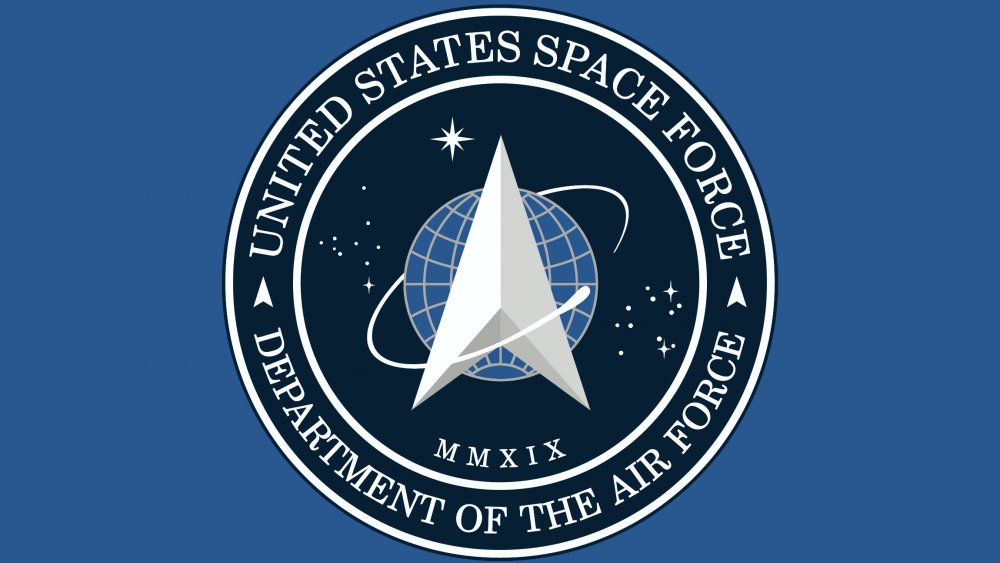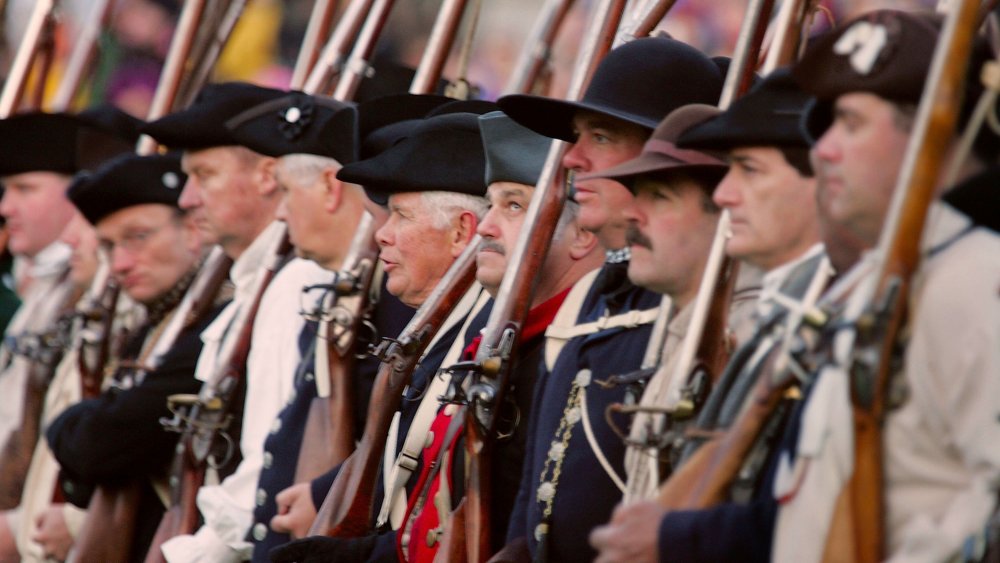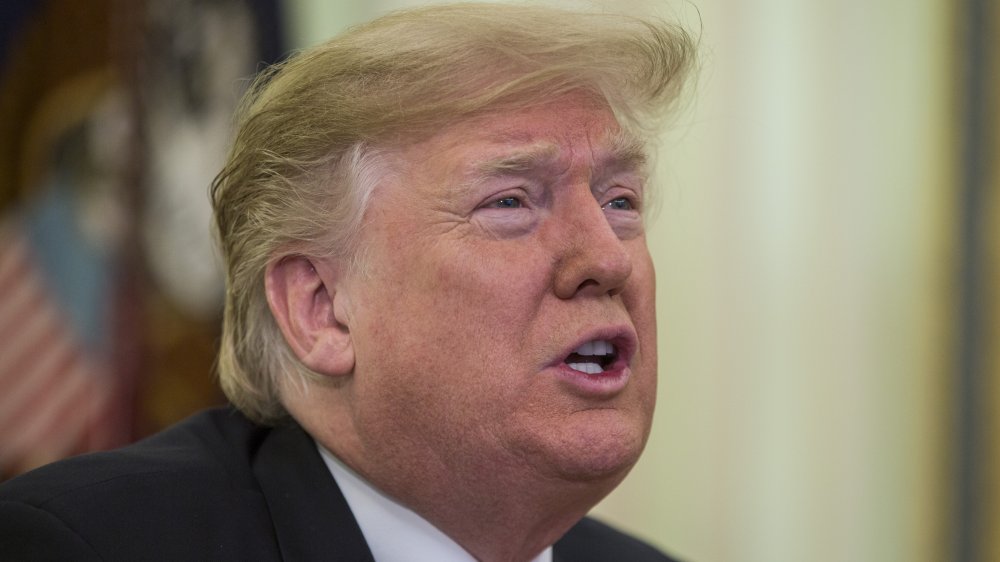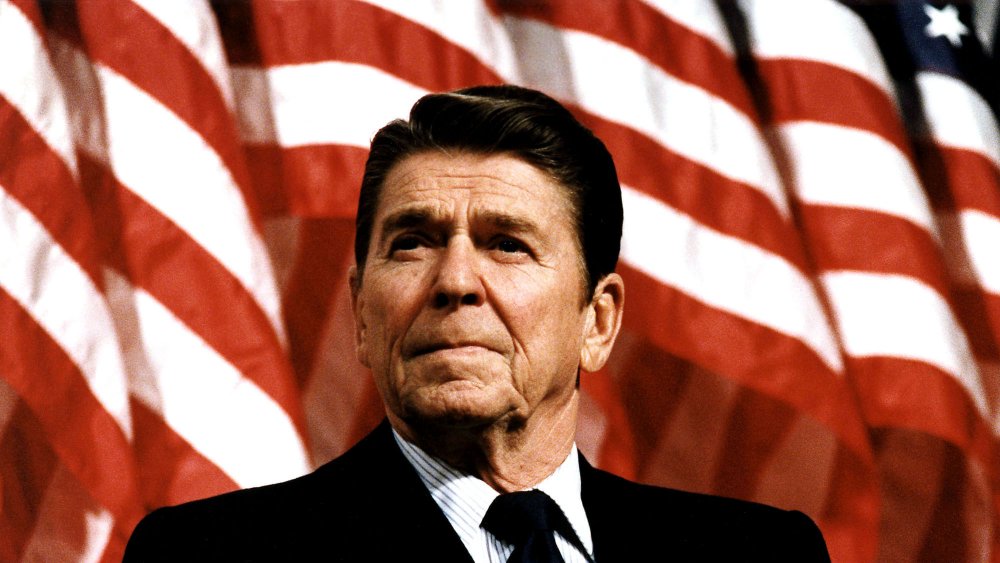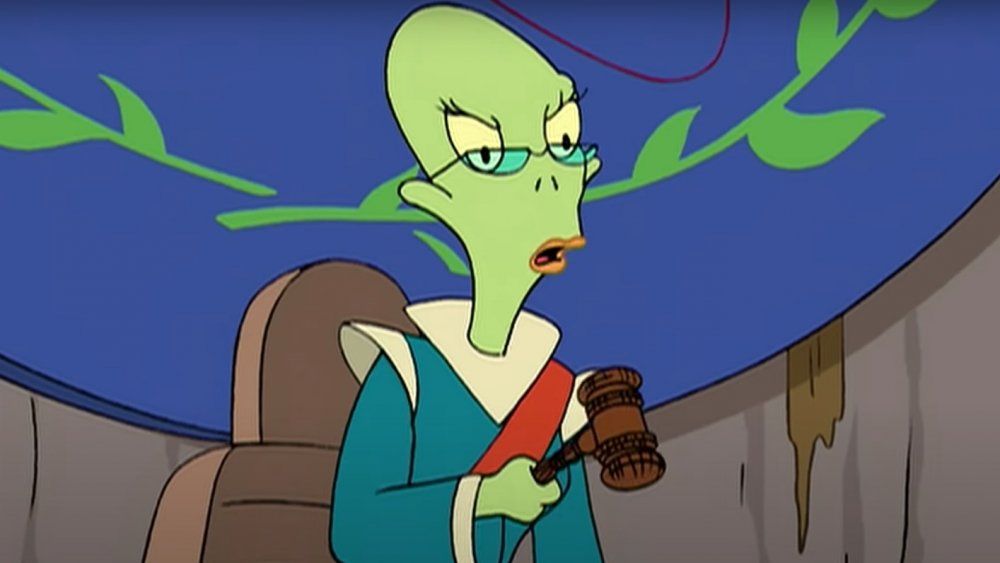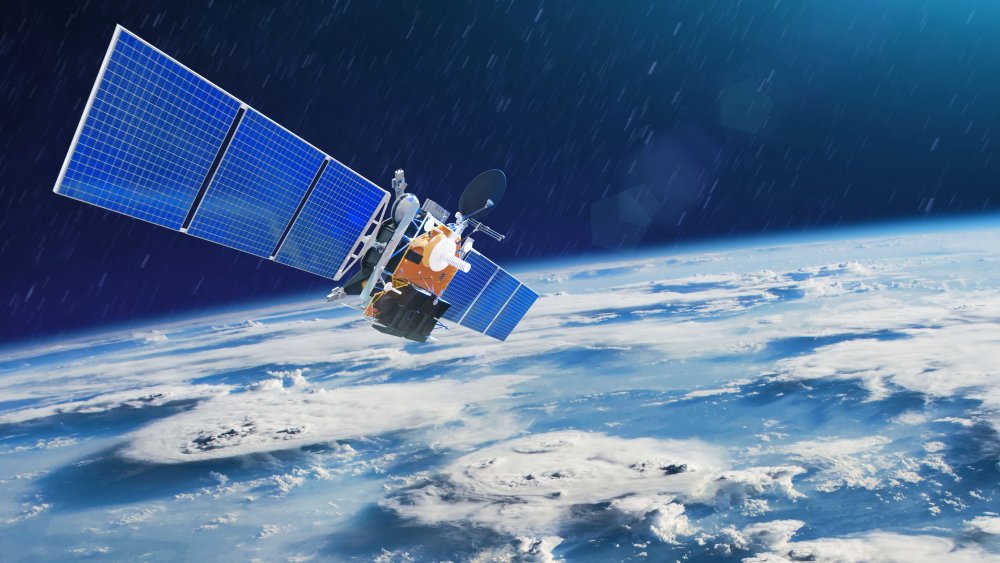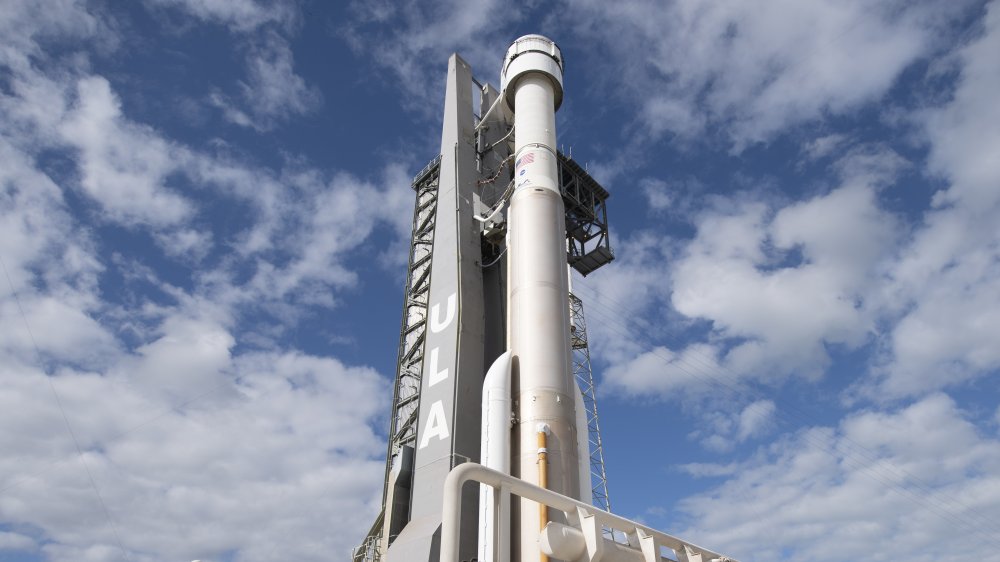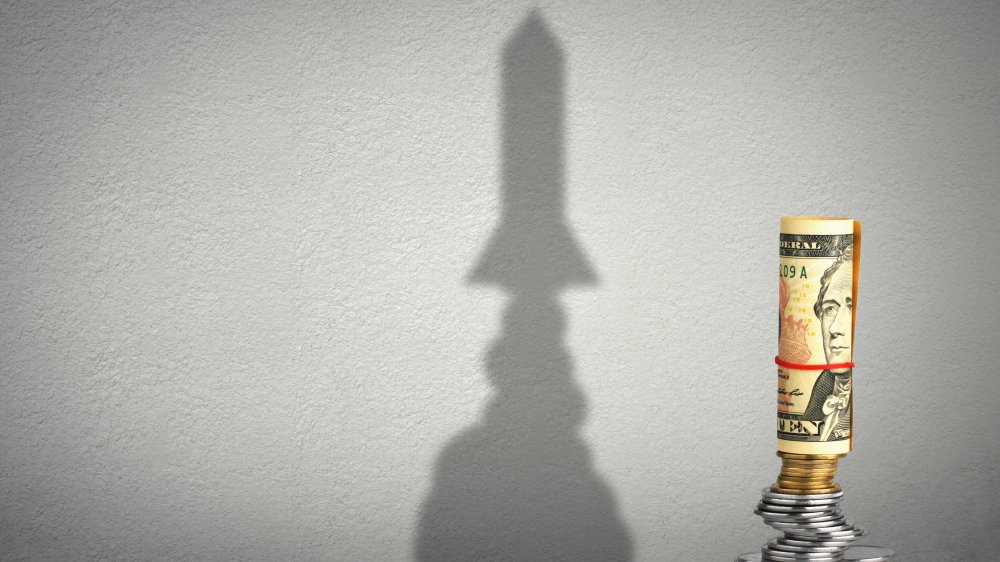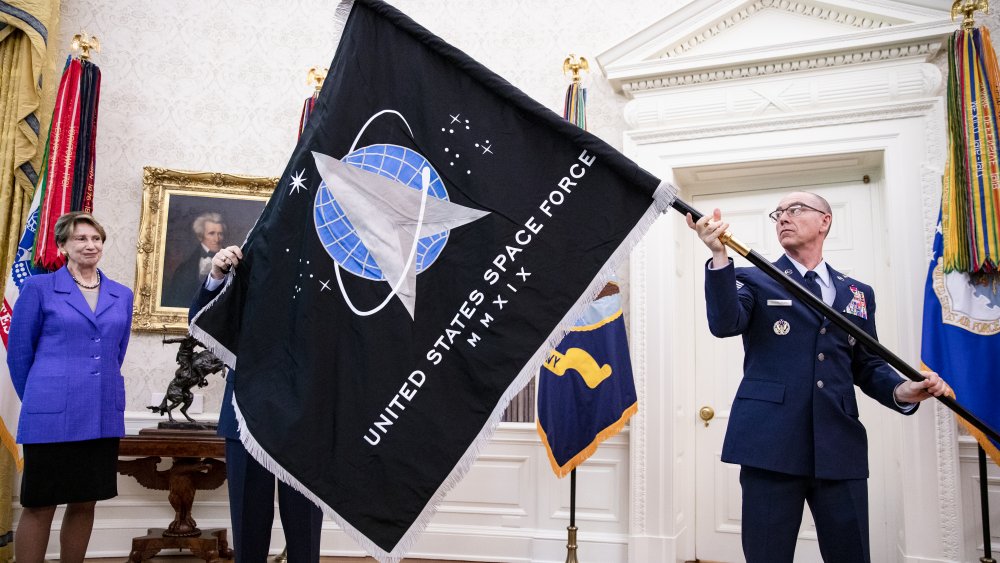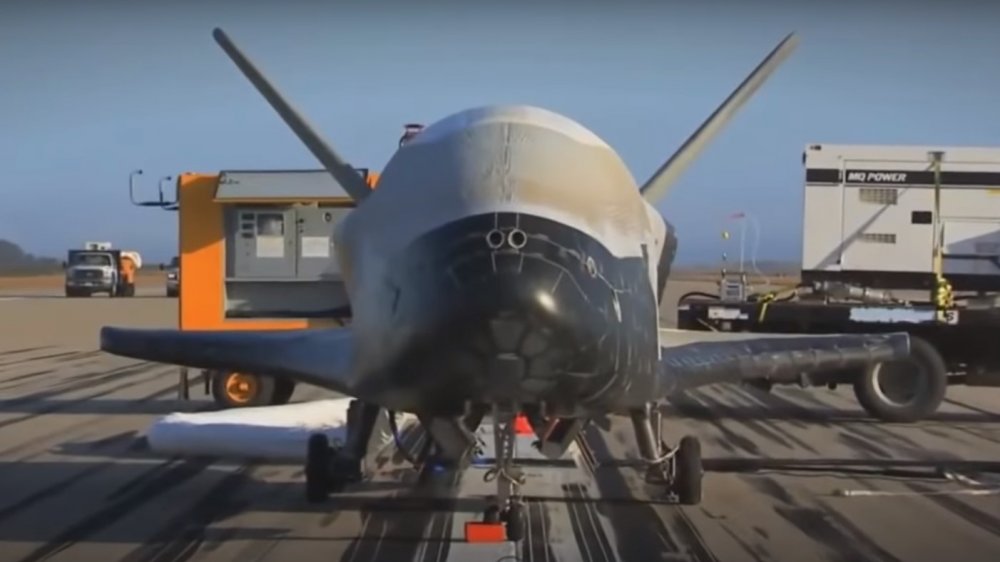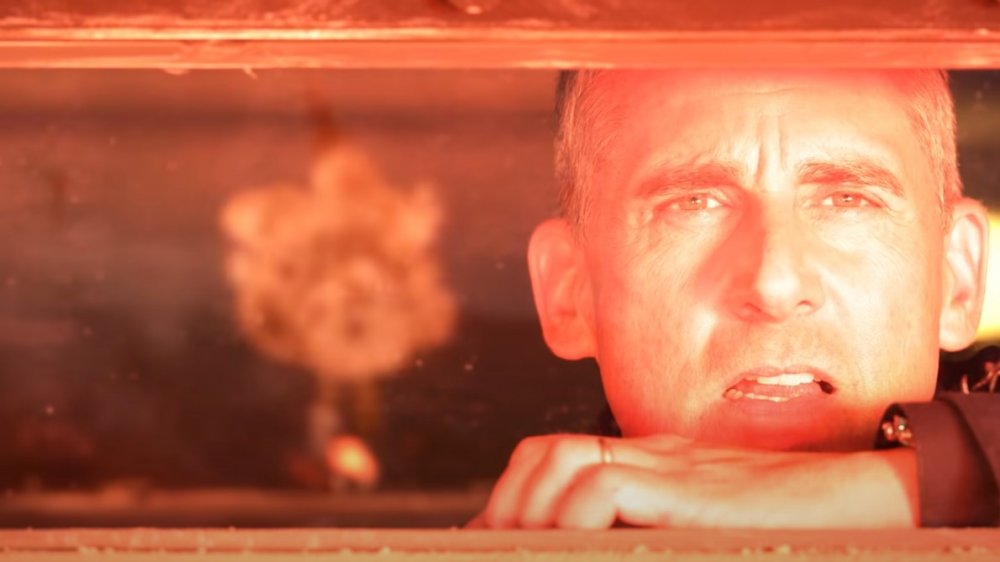The Untold Truth Of Donald Trump's Space Force
July 2, 1996: unquestionably the darkest day in American history. Anyone over a certain age can still think back, a far-off look in their eye, and tell you where they were when President Whitmore called, too late, for a large-scale evacuation of all major cities. They can tell you where they sat and watched, awestruck, as UFOs obliterated the White House and sent waves of flame careening through the streets of New York and Los Angeles. Yet, two days later, through the combined efforts of some of Earth's finest minds and a ragtag militia of pilots, we managed to beat back the invasion, once and for all establishing the Fourth of July as the planet's Independence Day.
But at what cost? And what was done to prevent future spacefaring adversaries from raining down calamity once again? And so, like the philosopher David Byrne, we ask ourselves, "How did we get here?"
First, some history
The history of the United States is inseparable from the history of its armed forces — our military predates the Declaration of Independence by more than a year, with the Continental Army officially founded in June 1775. It was hastily followed by the Continental Navy and the Continental Marines, signed into being by the Second Continental Congress after, one assumes, a hearty continental breakfast. Each was founded for the purposes of defeating those dastardly British during the American Revolution and stuck around for the seven or eight international conflicts that your social studies teacher sort of breezed past to get to the Civil War. More importantly, they all had a job to do. The basic version: The Army had soldiers, the Navy had boats, and the Marines had soldiers on boats.
As new needs arose, new branches of the military were formed. A customs enforcement agency called the United States Revenue Cutter Service merged with a humanitarian group dedicated to helping the passengers of wrecked ships, and in 1915, the Coast Guard was officially born. The Air Force wasn't made an official branch until 1947, by which point airplanes had well and truly established themselves less as "newfangled flying gizmos" and more as "integral aspects of two World Wars."
With each member for the military family created to serve a definable need, where did the inspiration for the Space Force come from?
I was not really serious
President Trump outlined the genesis of the United States Space Force project in an address to a group of Marines in March 2018. As quoted by The Atlantic, he stated the following: "I was saying it the other day — 'cause we're doing a tremendous amount of work in space — I said, 'Maybe we need a new force. We'll call it the Space Force.' And I was not really serious. And then I said, 'What a great idea. Maybe we'll have to do that.' "
Yes, like the Marvel Cinematic Universe and every David Lynch film, the US Space Force started out as a goof before snowballing into something that everyone took seriously, including the person who came up with it in the first place. That being said, this is far from the first time that America has tried to militarize Neil DeGrasse Tyson's favorite stomping ground.
The Space Force will boldly go where we've been before
For roughly as long as man has been capable of blasting stuff into space, we've been trying to harness that potential to blow something up. Like the James Bond franchise and all other good things, the concept of space militarization came largely as a result of the Cold War. Sputnik and the Apollo Program were inspirational and indicative of the human race's capacity for scientific achievement but were also a series of astronomically expensive veiled threats: "If we can do this, imagine what we can stick a bomb to."
It wasn't always as subtle as a lunar landing. In the late 1950s, the US Air Force's special weapons division developed Project A119, a plan to detonate a nuke on the Moon in a hyper-American preemptive display of that mentality Edward Norton exhibited when he beat himself up in his boss's office in Fight Club. In the 1980s, Ronald Reagan turned a few heads with the Strategic Defense Initiative, better remembered today as the Star Wars program, which would, in theory, have protected the United States from missile attacks using, among other things, weaponized satellites.
And sure, most to all of these plans fell apart, either due to fear of the negative press that "America Blows Up Moon" headlines would generate, or simply because the Cold War, very generally speaking, ended. But that's quitter talk. Why haven't we turned outer space into zero-G Dunkirk in the years that have followed?
The cool stuff isn't even legal
As it turns out, even in a world of constantly looming mutually assured destruction, there are some things that folks still get nervous enough about to try to prevent, things like bombs dropping out of the inky depths of space.
And that's how we got 1967's Outer Space Treaty, an agreement with signatories from every country with the walking-around money to potentially wind up with their own space program. While it doesn't outright ban the presence of the military in space, it does lay down some important rules: All involved parties agreed not to put weapons of mass destruction into orbit, on the Moon, or on any other celestial bodies. Claiming the Moon and other celestial bodies for any given nation is also frowned upon. According to The Space Review, Article IX of the treaty prohibits "unreasonable interference and harmful contamination in the outer space," i.e. the kind created by having awesome gravity-free dogfights 300 miles above the Earth's surface.
All of this begs the question, with these protections in place, what's the point of having a Space Force?
What threats would the Space Force confront?
So, what threats would the US Space Force confront? The biggie is America's not-unimpressive satellite collection, a smorgasbord of orbiting technology upon which just about everything you love depends: smart phones, electronic payment systems, and the always in-vogue services of Sirius XM Radio. Back in 2007, China killed two birds with one stone by both knocking their own pesky, disused weather satellite out of the sky with a missile strike and proving that they could hit, gosh, anything in orbit that struck their fancy, should the spirit move them.
That, according to General Jay Raymond, is just the sort of thing that current military branches are ill-equipped to deal with. "They shot down a satellite using an ASAT," he said in an interview with Breaking Defense. "We have to be able to be prepared to respond to that full range." It's also worth mentioning, as former ISS Commander Terry Verts did in an NPR interview, that the destruction of just that first satellite has already had consequences. The International Space Station has had to be maneuvered specifically to avoid debris from the incident, and the potential for wreckage to take out other satellites remains real.
That's the pragmatic answer. The Space Force could be in charge of space garbage and deterring the creation of more space garbage. Life isn't always as spicy as you hope it will be.
Experts didn't think the Space Force would (or should) happen
Even just saying it out loud, "the United States Space Force" doesn't quite sound real. That, combined with the near-obscene amounts of money inherent in a vanilla rocket launch, to say nothing of a military variant, led many to believe that it would never come to fruition. Jeffrey Kluger, Editor at Large for Time magazine, was especially skeptical. "Humanity's savage and yet ingenious nature being what it is, there may well be a time when we have the tools for actual warriors to do battle in actual space," he wrote in a 2018 article. "A space force then would then be a very good thing. But that time isn't now."
Others had harsher words. Senator Brian Schatz of the Defense Appropriations Subcommittee took to Twitter to say, "Although 'Space Force' won't happen, it's dangerous to have a leader who cannot be talked out of crazy ideas." Forbes aerospace and defense contributor Loren Thompson argued that any attempt at an independent space force would be ultimately pointless, as by its very nature, the program would rely almost entirely on the other branches of the military.
Despite all of this, the push was made, the branch was signed into being, and the first United States Space Force mission launched on March 26, 2020.
The Space Force's sticker price
So what's the Space Force setting us back? Ballpark, that is? If you have to ask, you probably can't afford it. The Department of Defense's budget request for the 2021 fiscal year asks for a cool $15 billion specifically for the purposes of developing the Space Force. Yes, that's a lot of cheddar — roughly $45 per person in the United States. And what's it paying for?
Among the line items in the proposed budget are five launches, two to place GPS satellites and three for secretive national security projects. Those would run a total of $3.4 billion. A further $2.5 billion would go toward infrared missile detection systems. The rest, in theory, would likely be put toward bumping the project's work force from 160 people to somewhere over 10,000, according to TechCrunch.
And if you're getting hit with sticker shock, it might help to know that the official Space Force Twitter account has promised to save taxpayer dollars by utilizing previously designed uniforms. Like the old saying goes, save a penny here, a penny there, eventually you can buy yourself a nice rocketship army.
Who's in charge of the Space Force?
So who's leading this effort? Who stepped forward to be the Captain Archer to this Starfleet? (Or whatever the outside kids version of that is?)
On January 14, 2020, General John W. "Jay" Raymond of the US Air Force was officially sworn in as the Space Force's Chief of Space Operations. Before taking his new job, he'd served 35 years in the Air Force, including a stint in charge of the Air Force Space Command starting in September 2016. According to the Space Force Fact Sheet, his responsibilities are legion: He "serves as the principal uniformed adviser to the Secretary of the Air Force on Space Force activities. The CSO presides over the Office of the Chief of Space Operations, transmits plans and recommendations to the Secretary of the Air Force and acts as the Secretary's agent in carrying them out."
There's also Chief Master Sergeant Roger A. Towberman, the Senior Enlisted Advisor of the United States Space Force and Command, a decorated 30-year Air Force veteran relocated to the Space Force in April 2020. And at the head of the operation is Secretary of the Air Force Barbara M. Barrett, an accomplished Arizona State University graduate, instrument-rated pilot, and, per her Space Force profile, "a cattle and bison rancher for close to three decades."
What's the Space Force driving?
The Navy has aircraft carriers, battleships, and submarines. The Army has tanks half the size of the Vatican. What's the Space Force driving these days? So far, their main ride is the X-37B space plane. The catch is that there's nobody on board, as far as we know.
The X-37B is an unmanned space plane, similar in overall vibe to the space shuttles of ye olden days but significantly smaller. Space.com describes it as weighing 11,000 pounds at takeoff, compared to 178,000-pound weight of Space Shuttle Columbia. It started out as a NASA project before being handed off to DARPA in 2004. Its payload bay, roughly the size of a pickup truck bed, is where the proverbial magic happens — in all of its test flights, the vehicle's cargo has been classified.
Speculation as to its contents has led to some wild theories. Some think it's already being used to construct outer space weaponry, whereas more pedestrian theories see it as a test vehicle for putting futuristic sensor systems through their paces.
Office Space
A decent chunk of popular culture has been eating lunch on the concept of the Space Force since the moment the words escaped the lips of the President. It started with late-night hosts, who continue to push Star Wars references to their breaking point any time the subject pops up. The concept was even evocative enough to bring Steve Carell back to television, and his re-teaming with The (American) Office creator Greg Daniels led to a star-encrusted Netflix series, Space Force, debuting on May 29, 2020.
If pop culture seems to have been harsh on Trump's perceived plans to put tanks in space, it may only be because the Space Force has taken so much from TV. As Jimmy Kimmel pointed out, a science fiction comedy pilot called Space Force aired in 1978. A very G.I. Joe-ish cartoon, Starcom: The U.S. Space Force, ran for 13 episodes in 1987.
And then there's the iconography. Easily one of the most easily jumped-on facets of the Space Force experience is the organization's emblem, which bears a just-shy-of-actionable resemblance to the Starfleet insignia of Star Trek fame. Does the military industrial complex pay royalties?
